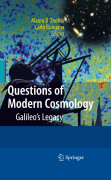
Are we living in the “golden age” of cosmology? Are we close to understandingthe nature of the unknown ingredients of the currently most accepted cosmological model and the physics of the early Universe? Or are we instead approaching a paradigm shift? What is dark matter and does it exist? How is it distributed around galaxies and clusters? Is the scientific community open to alternative ideas that may prompt a new scientific revolution - as the Copernican revolution did in Galileo's time? Do other types of supernovae exist that can be ofinterest for cosmology? Why have quasars never been effectively used as standard candles? Can you tell us about the scientific adventure of COBE? How does the extraction of the Cosmic Microwave Background anisotropy depend on the subtraction of the various astrophysical foregrounds? Triggered by these questions and in the spirit of Galileo's book “Dialogue Concerning the Two Chief WorldSystems” the roughly 40 interview partners reply in the form of essays, with critical frankness. A highlight contribution to the International Year of Astronomy 2009 Conducted as interviews with the most distinguished physicists, cosmologists and astronomers, this book presents the tentative answers of the scientific community to the challenges posed by cosmology to the standard physical paradigms of the last century With contributions by two Nobel Laureates INDICE: 1. Introduction.- 2. Fundamental cosmological observations and data interpretation.- 3. Astrophysical cosmology.- 4. From Galileo to modern cosmology: alternative paradigms and science boundary conditions.- 5. Next challenges.- 6. Concluding remarks.
- ISBN: 978-3-642-00791-0
- Editorial: Springer
- Encuadernacion: Cartoné
- Páginas: 540
- Fecha Publicación: 01/07/2009
- Nº Volúmenes: 1
- Idioma: Inglés
